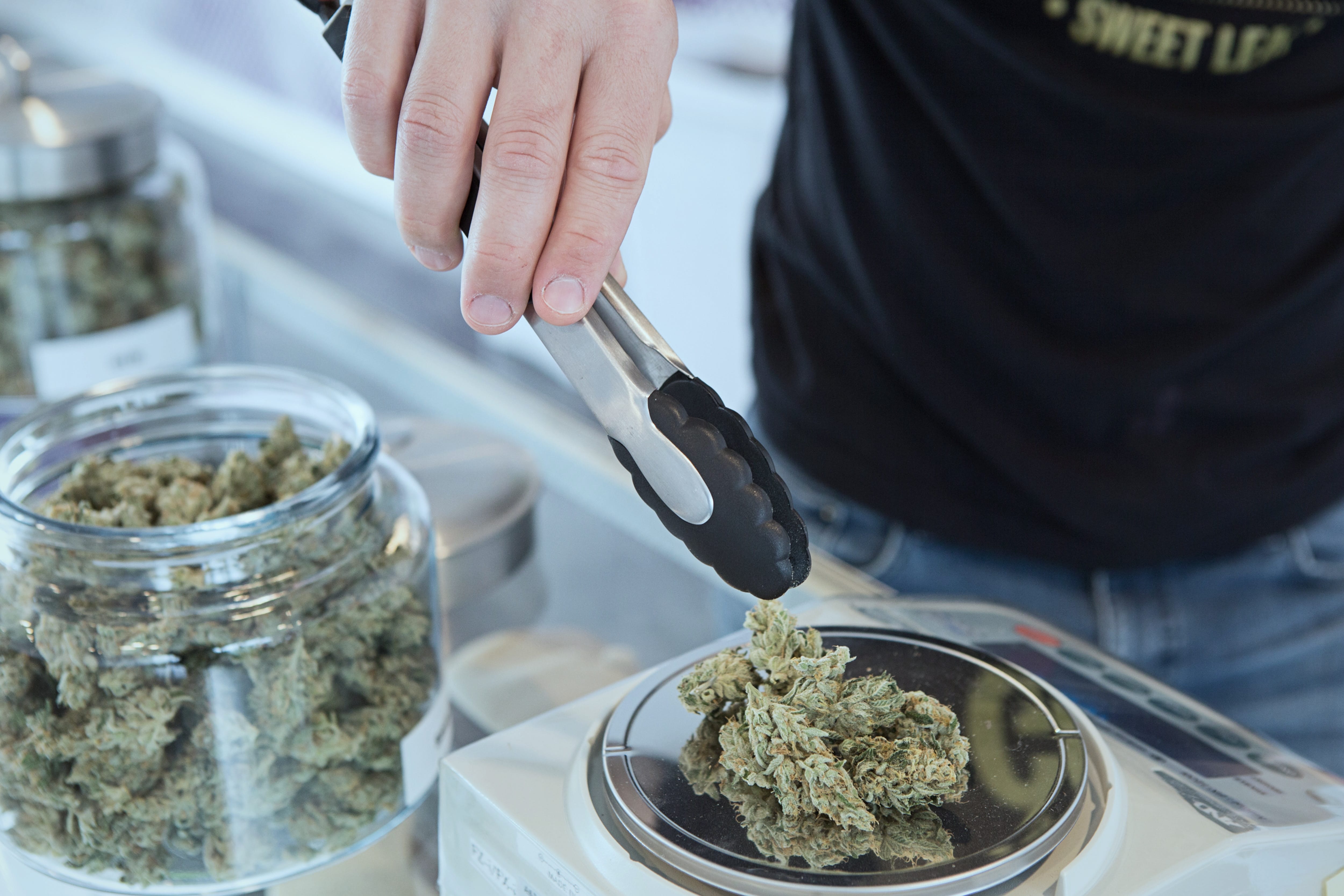All in all, THC was outlawed because of racial prejudice, and it seems likely that the drug has remained illegal for the same reasons.
In 2018, the Agriculture Improvement Act formally permitted farmers across America to legally cultivate cannabis as an industrial crop — as long as each plant contained less than 0.3 percent THC. THC, or delta-9-tetrahydrocannabinol, is typically the most abundant of a class of compounds called cannabinoids, which are unique to cannabis and are largely responsible for cannabis’s unique effects. THC in particular is the cause of the mind-altering high associated with the drug.
Since the federal government has all but legalized CBD, the second-most-plentiful cannabinoid which lacks psychoactive effects, it raises a new question: Why does THC remain illegal? Why are so many afraid of this particular component of marijuana? If THC is as dangerous as its detractors believe, why are so many states passing adult-use regulations?
A Quick History of THC in America
Cannabis, and thus THC, has been present in America almost since its discovery by Europe. Colonies in the New World survived their first few years by farming hemp, which was long valued as a fiber to make clothing, ships’ sails and other textiles. Though White colonists did not use cannabis for its psychoactive properties, the Black slaves they relied upon did maintain small, personal marijuana crops for smoking ritually and recreationally.
Through the 19th century, small amounts of THC made their way into health tinctures, which were widely distributed amongst White Americans as treatments for various conditions. During the same period, African slaves throughout South America and the Caribbean were sharing their cultural practice of smoking marijuana with native groups and the descendants of Spanish and Portuguese settlers.
By the turn of the 20th century, Latin Americans were immigrating to the U.S. in droves, eager to take advantage of the increasing industrialization and wealth within the country. They brought with them the practice of using marijuana for fun. Unfortunately, White Americans were not fond of Spanish-speaking immigrants even then, and many states passed laws to gain more control over Latin people passing over the border. Despite a lack of evidence, wealthy congressmen claimed that using marijuana inspired violence and criminal activity, and they passed laws against its sale, possession and use. Using these laws, the U.S. was able to incarcerate People of Color with greater ease.
What THC Does to the Body and Brain
Beginning in the 1940s, Americans began to research and understand marijuana outside of the propaganda spread by wealthy White Americans. Scientists identified first CBD, then THC — the two most dominant compounds unique to cannabis and likely to cause the drug’s famous effects.

Yet, it wasn’t until the 1990s that scientists were able to explain exactly how THC interacts with the body and mind. When THC floods a user’s bloodstream, it binds with receptors belonging to the endogenous cannabinoid system, or endocannabinoid system (ECS). THC looks remarkably similar to a compound produced by the body, anandamide, which helps send messages to the brain and to various bodily systems. Systems affected by anandamide and THC include the nervous system, the immune system, the digestive system and the reproductive system, at least.
When THC binds to ECS receptors, it overwhelms them, causing more intense reactions. For example, while anandamide might make a person feel motivated, THC causes intense focus; anandamide might help the brain release dopamine, but THC causes euphoria; anandamide regulates the female reproductive system, and THC radically increases female libido.
Should THC Be Illegal?
A person can use too much THC, but the results aren’t quite as dire as an overdose of a more dangerous drug. Typically, THC “overdoses” are merely more intense effects than a user would normally experience: Instead of hunger, they feel nauseated; instead of gleeful, they feel panicked.
Not once has too much THC impaired a person’s long-term health or caused death. Deaths associated with marijuana use are more often because those using found themselves in dangerous situations, like behind the wheel of a car. What’s more, sociological studies of the drug’s use do not indicate that it causes violence or criminal behavior, in users or in communities, and the evidence is weak that marijuana use has any long-term negative effects on health or mental outlook.
All in all, THC was outlawed because of racial prejudice, and it seems likely that the drug has remained illegal for the same reasons. THC is not dangerous to the health and wellness of users — at least no more so than alcohol or over-the-counter drugs. Given that the federal government has legalized the cultivation and sale of industrial hemp, it seems only fair that Congress consider the benefits of legalizing THC, too.


Join the conversation!